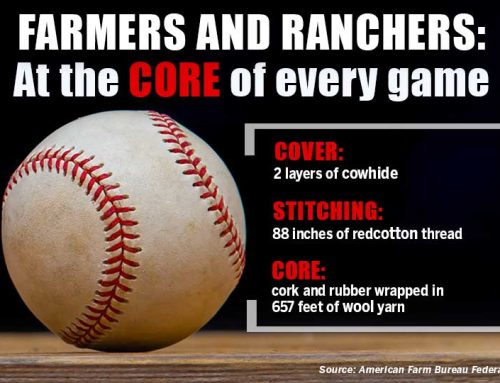By Jennifer Dorsett
I’m sure by now you’ve heard or read about the Green New Deal. In case you haven’t, the broad strokes of this plan are to reduce greenhouse gas emissions while simultaneously trying to correct societal issues.
Sound complicated? It is. I’ll spare you most of the details and direct our attention to the parts that concern agriculture.
The document, first released to the public by NPR, calls for “working collaboratively with farmers and ranchers in the United States to eliminate pollution and greenhouse gas emissions from the agricultural sector as much as is technologically feasible, including—by supporting family farming; by investing in sustainable farming and land use practices that increase soil health…”
Once again, politicians are publicly bemoaning the supposed evils of modern agriculture without knowing the entire story. Regardless of your political affiliation, the facts are simple.
Modern agriculture has been reducing pollution and greenhouse gas emissions. For years now.
While politicians publicly argue and point fingers at each other, farmers and ranchers have quietly been going about their business. Using fewer chemicals, less water and less fuel. Changing and adapting. Incorporating new methods to make growing food and fiber as efficient and productive as possible.
Why?
Farmers and ranchers care about their land and livestock. They want to leave a lasting legacy for their families, and one doesn’t build things to last by running resources into the ground.
As one farmer recently told me, “My land means everything to me.”
But if you need more facts, there’s research to back it all up.
According to the U.S. Department of Agriculture’s Economic Research Service, 99 percent of U.S. farms are family farms. It’s nice to know politicians want to support family farms. Maybe they can show they care by supporting federal policies that actually will help those family farms.
Although it has been widely circulated in the media that Green New Deal proponents have expressed a desire to rid the U.S. of “farting cows,” research has shown that if livestock were eliminated from production agriculture, it would only reduce U.S. greenhouse gas emissions by 2.6 percent.
Emissions from the transportation and electricity sectors, which add up to a total of 56 percent of all U.S. greenhouse gas emissions, should be a far bigger concern than that tiny 2.6 percent reduction we could get by eliminating production livestock practices.
In addition, studies like this one show the U.S. and other developed countries have lower beef production carbon footprints—anywhere from 10 to 50 times lower—compared to many developing countries.
The U.S. beef industry has one of the lowest carbon footprints in the world due to a combination of cattle genetics, feed efficiencies and animal management techniques. It’s a proven fact.
I do believe humans can do more to take care of our planet.
But I don’t think it’s fair to point fingers at U.S. agriculture as a huge source of pollution and environmental destruction, especially when other industries and sectors have been shown time and time again to emit significantly more greenhouse gases.
Some think if we stop raising livestock, we can use that land to grow other crops. That might be the case for some pastures, but not for most. On much of this land, grass is all that will grow. And without ruminants, millions of pasture acres would be of no human food value.
As you take a bite of your hamburger or cut into your steak, know that U.S. farmers and ranchers are doing their best and continually improving.
Eating beef, and all meat, is a choice. Enjoy it, guilt-free, with a glass of sweet tea.











Leave A Comment